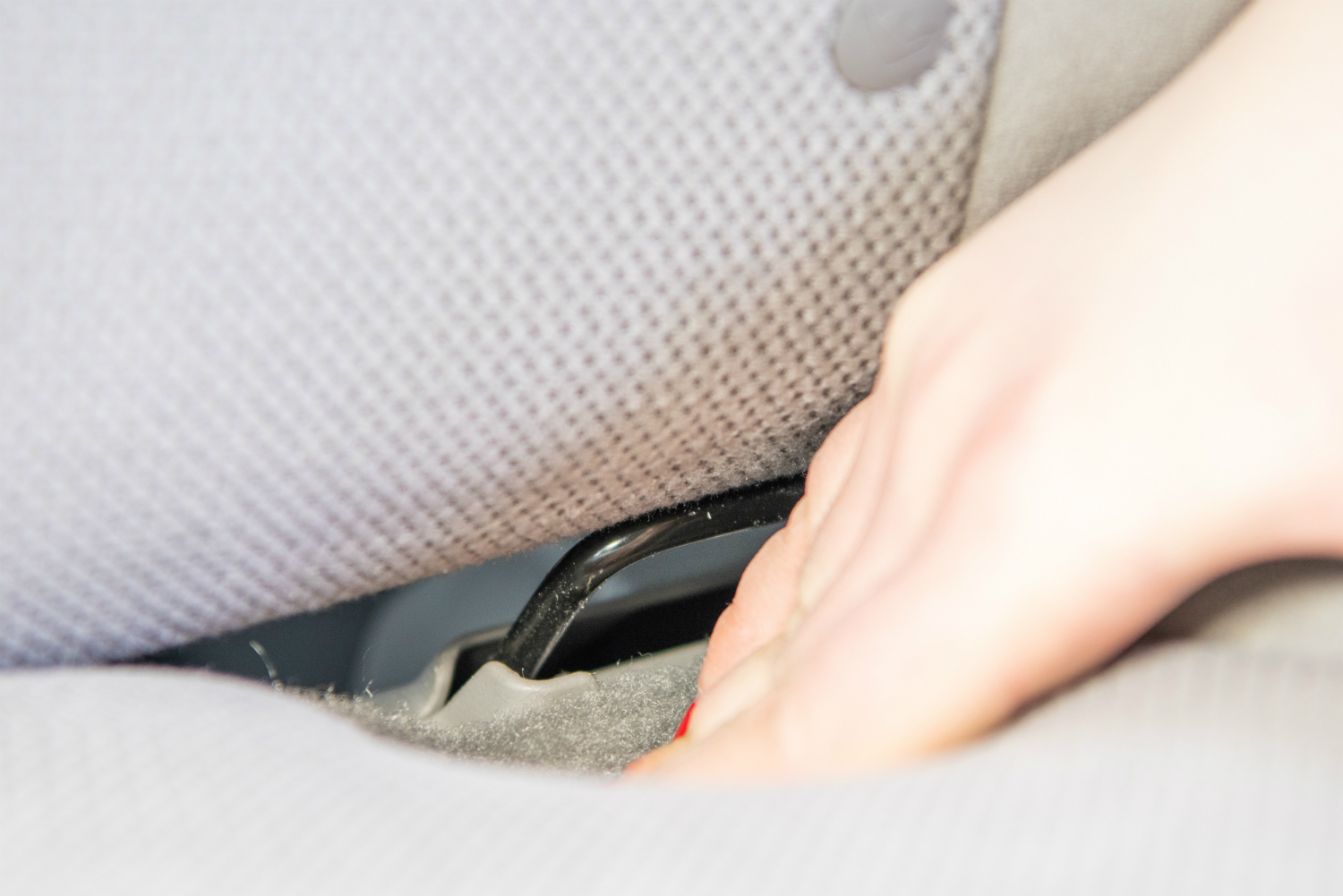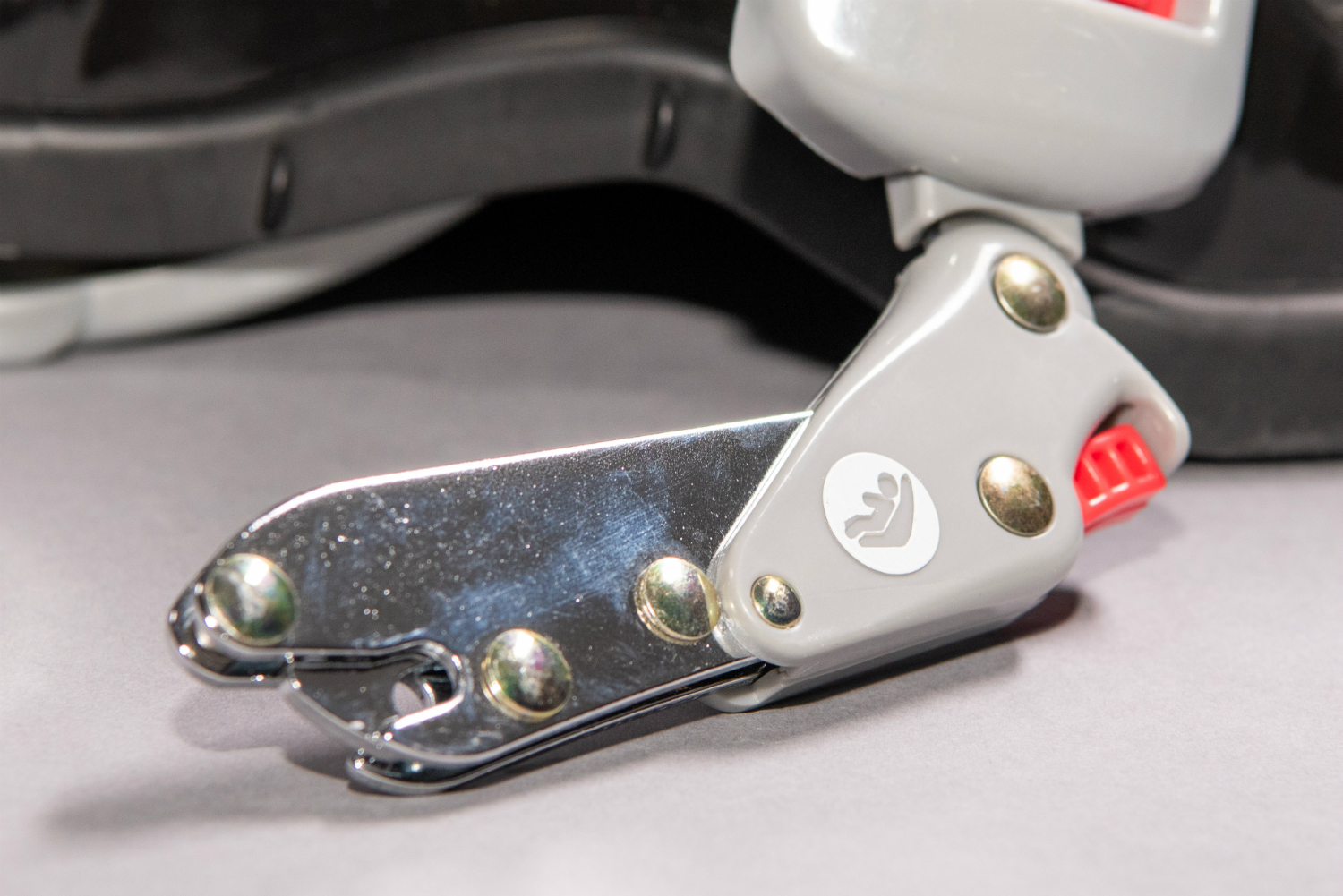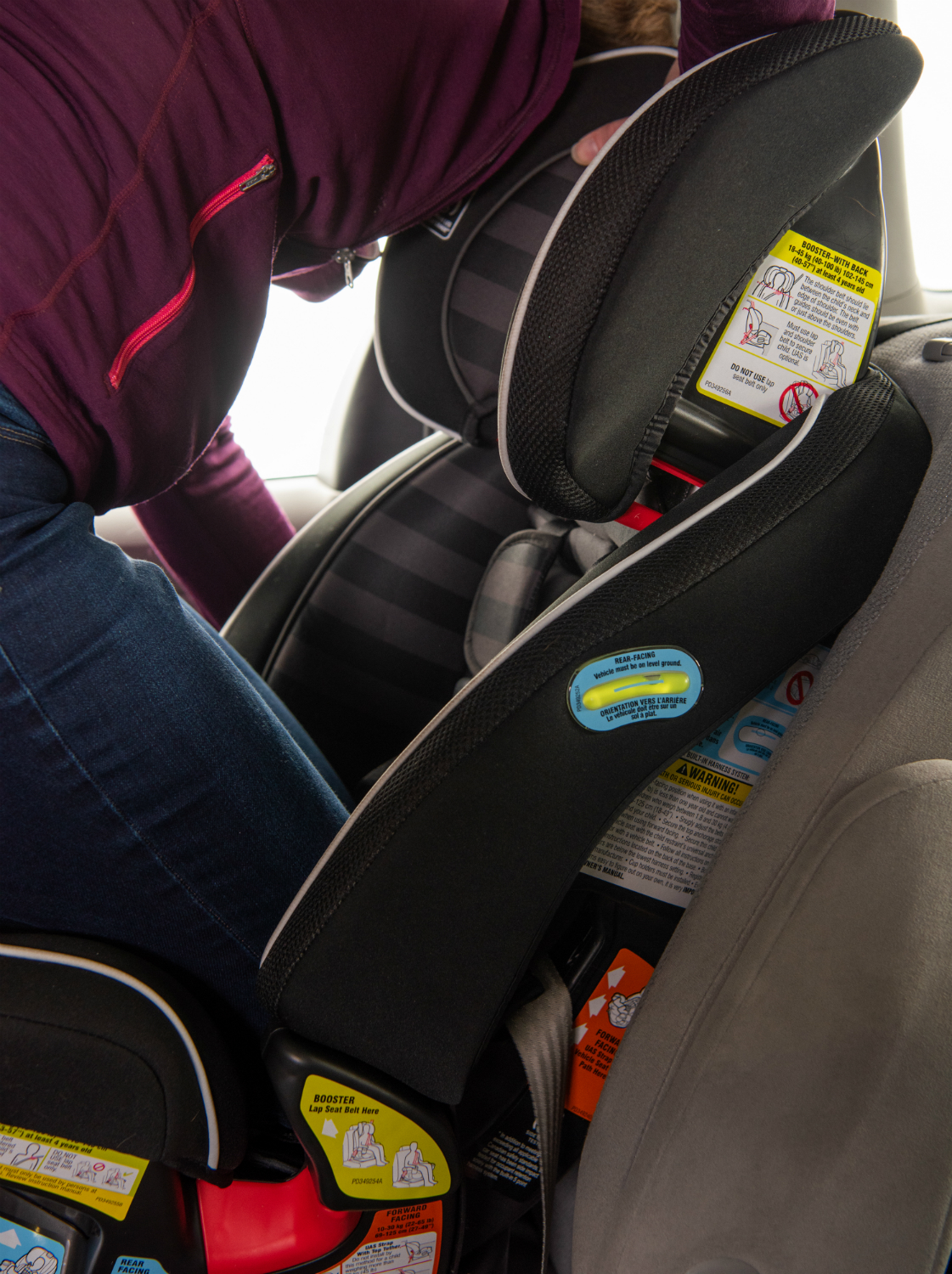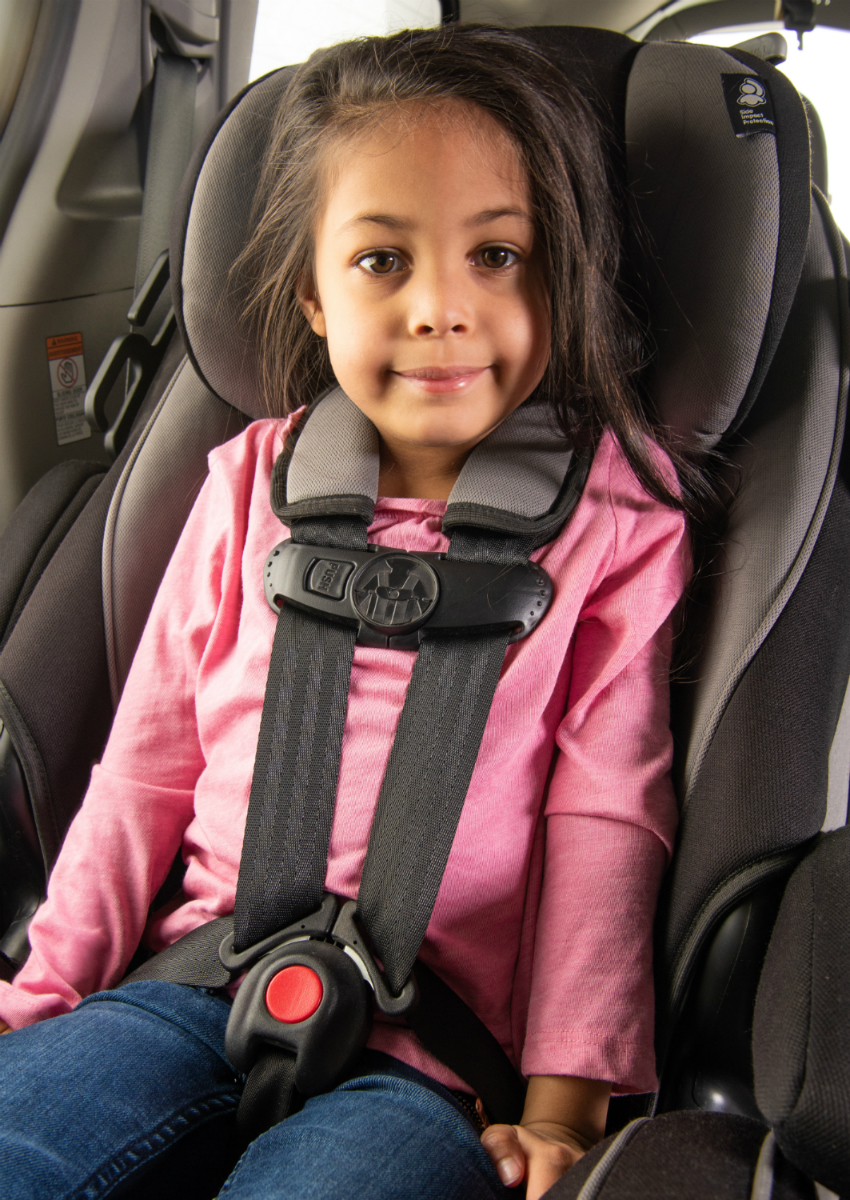Don't transition to this stage unless you are sure:
- your child has outgrown the child car seat's ranges for use in the rear-facing mode
- the regulations in your province or territory allow it
Before installing the child car seat, read the sections of your vehicle owner's manual and child car seat user's manual that describe how to install child car seats. There may be a child car seat clinic in your community that can help you install your child car seat.
On this page
- Checking the fit of the harness
- Installing your forward-facing seat in your vehicle
- Checking to make sure your forward-facing seat is installed correctly
- Buckling up your child
- When to move your child from a forward-facing seat to a booster seat
- Contact Motor Vehicle Safety
Checking the fit of the harness
There are important differences between how to adjust the harness in a rear-facing seat and in a forward-facing seat.
Adjust the harness straps so they are at or just above your child's shoulders. Some child car seats allow you to adjust the harness height by moving the headrest up or down. You may find this easier to do before you install the child car seat in your vehicle.
As your child grows, check the fit and readjust the harness.
Installing your forward-facing seat in your vehicle
Always install the forward-facing seat in the back seat of your vehicle. All vehicles have air bags in the front dash. These airbags are powerful and can hurt children if they inflate during a crash.
Make sure the forward-facing seat is at the right adjustment positon as you install it in your vehicle. Look for this information on the child car seat labels or in the child car seat user's manual. A tight installation reduces how far the child car seat will move during a sudden stop or crash. This protects your child and others seated in the vehicle.
Always attach a forward-facing seat to the vehicle seat with both:
You should note that the belt path for forward-facing seats is different than for rear-facing seats. The right path will help you get a tight and secure fit.
Universal anchorage system (UAS)
Vehicles made after 2002 are equipped with a UAS and therefore have lower anchor bars.
We recommend that you use them to install your child car seat, if the seat position where you want to install the seat is equipped with lower anchor bars.
UAS:
- are only designed for securing child car seats
- are simpler to use than a seat belt
- can help you get a tighter fit that stays tight
A tight fit helps protect your child by reducing how much the child car seat will move during a sudden stop or crash.
Check your vehicle owner's manual to:
- find these anchors
- learn how to use them
This symbol
shows you:
- where to find the UAS lower anchor bars in your vehicle
- They are between the vehicle seat cushion and seat back, close to the seat belt buckle
- Note: many vehicles do not have UAS for the center seat
- where to find the connectors on your child car seat
Check the label on the child car seat to find the correct path for the UAS belt.
If your child car seat has built-in locking clips, follow the instructions on the child car seat for using the clips.
Attach the hooks or connectors to the UAS bars. As you push down on the child car seat, tighten the UAS strap.
Check your vehicle and child car seat manuals for instructions on the maximum weight limits for children using child car seats attached with the UAS. If your child weighs 18 kg (40 lb) or more, and you can't find instructions, use both the UAS and the vehicle seat belt. Always use the top tether anchor.
Seat belt
Use the seat belt if you cannot use the UAS bars or if there are no lower anchorage bars in your vehicle.
A locked seat belt will help keep the child car seat tight after you have installed it.
Your child car seat may have built-in locking clips, follow the instructions on the child car seat for using the clips.
Check your vehicle owner's manual to learn how to lock the seat belt.
- Pull the shoulder belt portion out completely and hold onto it before you pass the seat belt through the recommended path. This will lock the belt in most vehicles.
- Check the label on the child car seat to find the correct path for the seat belt. Note that convertible child car seats have two paths for the belt – one for rear-facing mode and one for forward-facing mode.
- Insert the tongue into the vehicle seat belt buckle before releasing the seat belt.
- Grab the vehicle seat belt near the buckle and tighten the seat belt by pushing down on the child car seat and pulling up on the shoulder belt.
Top tether strap
Look for this symbol
Always attach the top tether strap to your vehicle's tether anchor. The top tether secures the top of the child car seat to the vehicle. This can help prevent injuries to your child's head during a sudden stop or crash.
Check the section on child car seat installation of your vehicle owner's manual to:
- find the top tether anchorage locations in your vehicle
- learn how to pass the tether strap over or under the headrest
Check the child car seat user's manual to:
- find the top tether hook on the child car seat
- learn how to attach and tighten the top tether
Follow these steps once you have attached the tether:
- Tighten the top tether strap until it is tight.
- Push down on the child car seat with your knee and tighten the UAS or seat belt again.
- Tighten the top tether strap again.
Helpful hints
- Pushing down on the child car seat with a knee as you tighten the vehicle belt or UAS strap will help you get a tighter fit
- Items that didn't come with your child car seat, such as seat protectors or comfort pads, may not be safe to use
Checking to make sure your forward-facing seat is installed correctly
Try to install your child car seat as tightly as possible, to keep your child safer in a sudden stop or crash:
- Grab both sides of the child car seat where the seat belt or UAS belt is threaded through the child car seat
- Try to move the child car seat from side-to-side and front to back. It should not move more than 2.5 cm (1 inch)
Buckling up your child
Make sure the harness is snug every time you place your child in the child car seat. This will keep your child as safe as possible during a sudden stop or crash.
Buckle
Attach the buckle. Give it a tug to make sure it is buckled.
Harness
Make sure the harness straps are at or just above your child's shoulders.
Adjust the harness straps until they are snug on your child's shoulders.
To make sure the harness straps are snug on your child's shoulders:
- Slide a finger under the harness at the collarbone and pull gently up/out, the harness should feel snug on your finger; or
- Attempt to pinch the webbing of the harness with the thumb and forefinger. If you are unable to pinch the harness, then it is sufficiently tight.
Chest clip
Attach the chest clip and slide it to your child's armpit level. Give it a tug to make sure that it is closed properly
Make sure to:
- Check that the harness is snug every time you place your child in the child car seat
- This is important when changing clothes for different seasons,
- Be sure to follow the manufacturers’ instructions, and to re-adjust the harness for each use.
- Follow the steps above to make sure the harness is snug.
When to move your child from a forward-facing seat to a booster seat
Even if your provincial or territorial regulations allow the use of a booster seat, children should keep using a forward-facing seat until they outgrow its weight or height limits. Many forward-facing seats have weight limits up to 30 kg (65 lb).
The harness of a forward-facing seat is designed to fit the narrow shoulders of children. This helps protect children in front, side and rear impact crashes. The harness holds your child back and spreads the forces of a crash over the strongest parts of your child's body.
Contact Motor Vehicle Safety
Telephone: 1-800-333-0371 (toll-free), 613-998-8616 (Ottawa region)
Email: mvs-sa@tc.gc.ca









